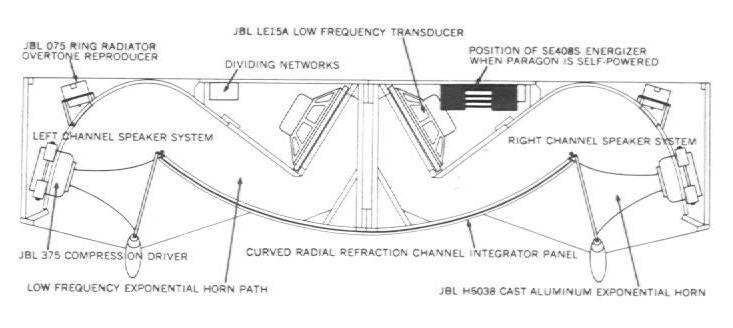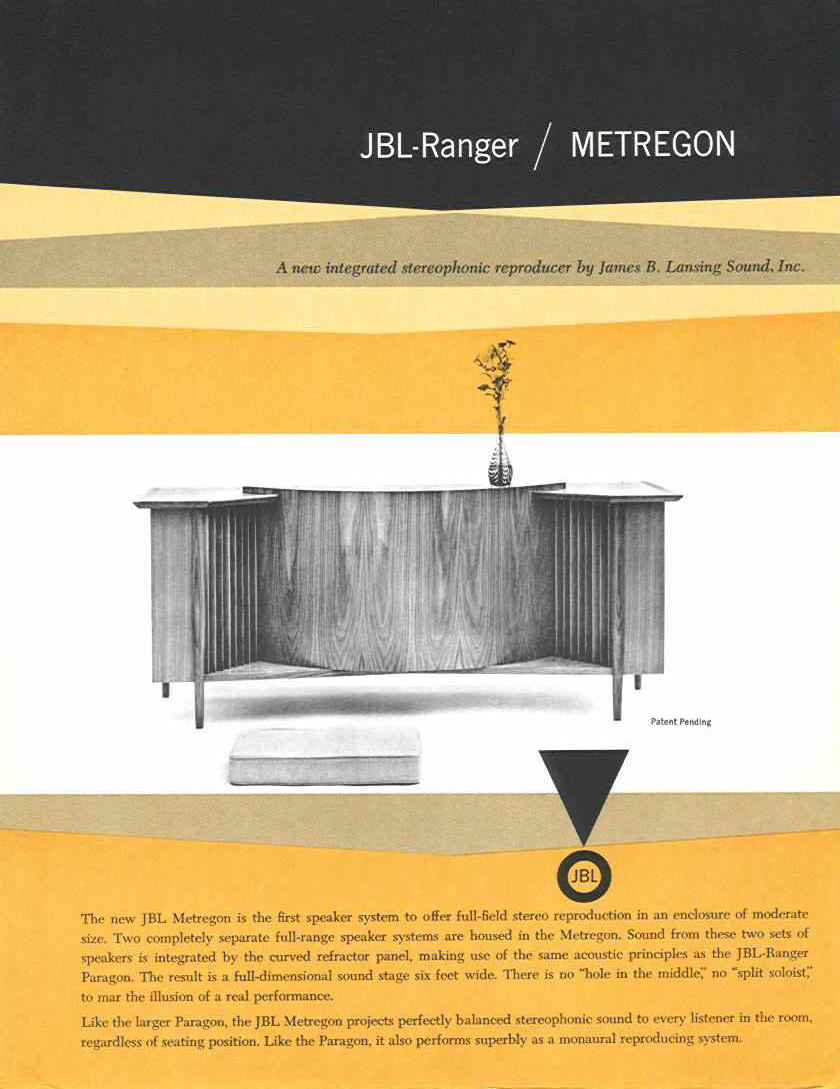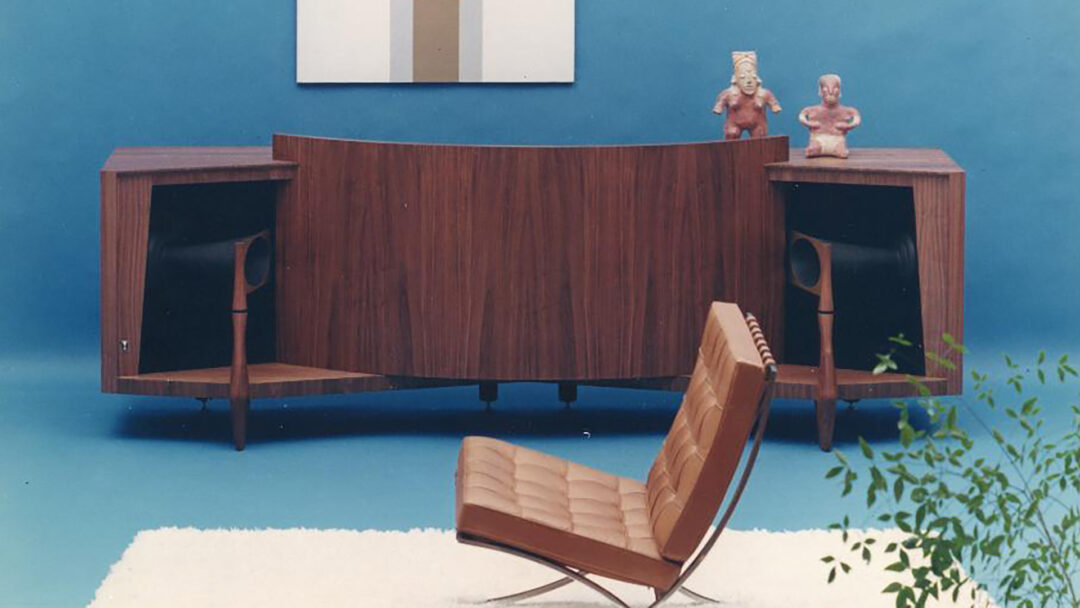When it comes to vintage speakers, JBL is among the most sought-after brands. And no JBL speaker is as legendary and recognisable as the JBL D44000 Paragon. The 270 cm wide speaker looks like a cabinet, but behind the noble wood veneer is a three way stereo horn system. In fact, the JBL Paragon was the first commercial stereo speaker system for home use. It was also the world’s most expensive speaker at launch!
With a Paragon in the living room, you had a sure conversation starter when friends from the upper bourgeoisie visited for a cocktail party. The design was groundbreaking – and the sound even more so. The giant speaker could reproduce the sound of a big band or classical orchestra at natural volume. And thanks to state-of-the-art stereo technology, it was – almost – like having the orchestra perform in your living room.
Acoustic masterstroke
Technologically, Paragon was unique. The bass range was reproduced by two 15-inch woofers in horn cabinets, and the other tone ranges were also horn loaded. What was really special, however, was the large curved wooden panel on the front, the brainchild of electronics engineer Richard H. Ranger. Two midrange horns pointed towards the panel, which spread the sound towards the listeners in a fan shape. It was an acoustic stroke of genius!

When listening to normal stereo speakers, you always need to be in the sweet spot between the speakers to get a correct stereo image. If you move even slightly away from the centre, the stereo perspective collapses and you hear almost only the sound from the nearest speaker.
A JBL Paragon maintains stereo perspective no matter where you are in the room. It’s a feat that virtually no other speaker can match!
No two are alike
The JBL Paragon is a piece of true craftsmanship, and the huge cabinet was built by hand. Legend has it that there was no single, authorised design plan for the Paragon speaker. The golden rule existed only in the minds of JBL’s cabinet makers, and each speaker is built and customised individually. Therefore, you can’t take a panel from one Paragon and use it as a spare part for another.
Approximately 112 man-hours went into the production of each speaker (sanding with sandpaper alone, followed by three coats of oil, took three working days), and a special workshop at JBL was devoted to the Paragon alone.
Tandberg and others will have to excuse us. If there's one that tops the list as the most important Norwegian amplifier of all time, it's this one.
In Paragon’s heyday, five units were built a week, but by the end of the era, the production rate had dropped to one a month. The last JBL Paragon speaker was built in 1983. With 25 years in the product catalogue, it remains to this day the longest-producing JBL model.
If you want a Paragon for yourself
If you’ve got the idea that a JBL Paragon in your living room will give you the style and status you’ve been missing, then we hope you’ve just won the lottery.
The good news is that you can actually buy one. A search on eBay brings up several original examples in nice condition. The bad news is that you should expect to pay between 20,000 and 40,000 euros for a Paragon, depending on condition and rarity. Add to that the cost of getting the 317kg behemoth shipped to your home country. Most Paragons were sold on the US domestic market, but examples also turn up in European countries from time to time.
There’s the matter of size and price …
If you don’t have room for a speaker that measures 270 cm in width and 80 cm in height, there are solutions. The same applies if the price is a little too high. JBL made two smaller versions called Metregon and Minigon, which are respectively 2/3 and 1/3 the size of the Paragon. In addition, there are modern scale models of the Paragon in 1/8 size. You can also buy a set of construction drawings online.

Is it worth it?
That the JBL Paragon is one of the most desirable speakers ever is beyond doubt, but does it measure up to today’s models?
Quality costs money, and if you splash the cash on the project, you’ll own a classic piece of craftsmanship unlike anything you’ll find anywhere else. It does have limitations in the bass. And depth perception – that is, the experience of being able to place instruments in a three-dimensional space behind the speaker – is not present to any significant degree. Here, modern speakers are far more accurate.
But a JBL Paragon can fill the room with sound in an overwhelming way, without you needing a huge amplifier. What’s more, everyone can join in, as you don’t have to sit in the good chair to get stereo.
Main photo: Harman International


My mind was blowed out in 1967. My friend took me to see his dad’s new stereo…mackintosh amp, AR turntable, JBL PARAGON , and Coletrain A Love Supreme .
I own a vintage d44000, and need it professionally restored. Please advise.